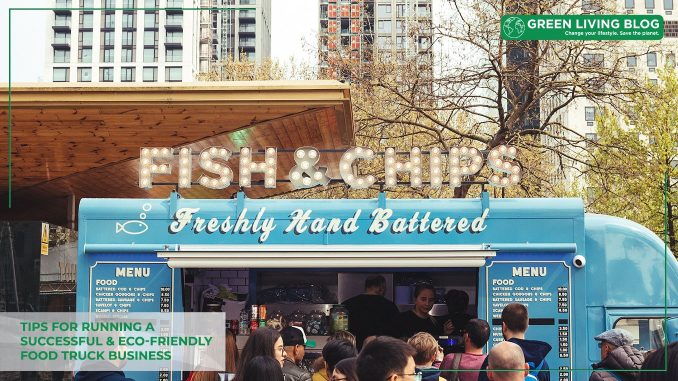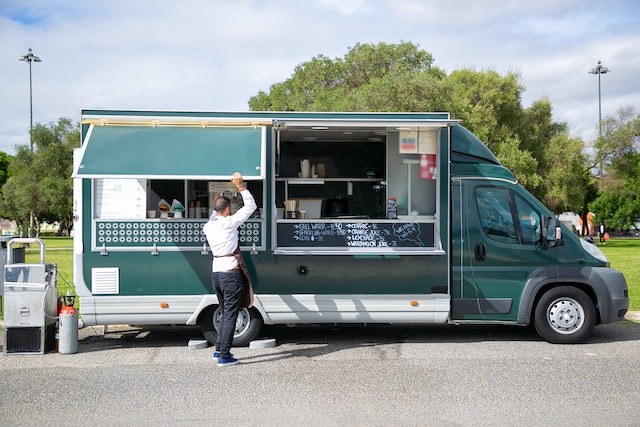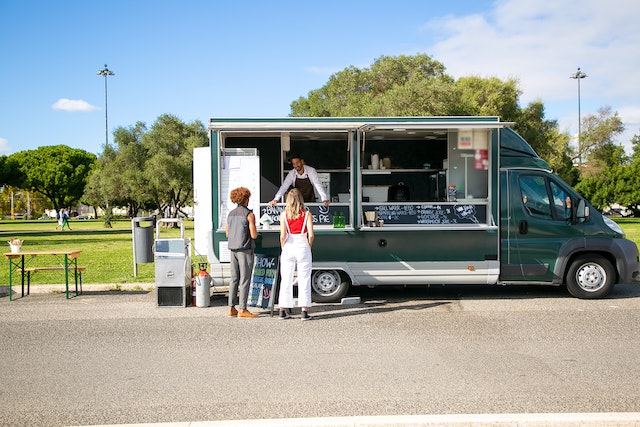
A food truck could be a good option if you have a penchant for creating delicious street food and the skills to create and deliver these tasty dishes quickly to your customers.
As well as being able to provide delicious food to the public, a food truck also provides you with some extreme freedom, setting up shop wherever you see fit, within reason.
One potential downside to running a food truck is that it will add an extra challenge for you when attempting to be eco-conscious, as you may end up producing significant emissions when running your truck.
To help deal with this, we’ve listed four useful tips for running your food truck while also keeping environmentally friendly pursuits in mind.
1. Choose An Electric Vehicle

One of the best options for your business in terms of transportation is to consider using an electric truck. The emissions that will come from a diesel or petrol truck, as well as one that uses gas for cooking, can be very detrimental to the environment.
Switching to an electric food truck will cut these emissions out, and you’ll also find that the costs required to run your van could be reduced, too. The only downside here is that you will have to spend time charging your van or finding a space to set up with access to a power supply.
2. Reduce Your Waste

When running a food truck, you’ll find that waste can be a big problem. Just as with a brick-and-mortar restaurant, the waste produced by your food truck and your customers, such as empty packaging and food waste, can be excessive. Cutting down on this waste is extremely important if you wish to run an eco-friendly food truck business.
You can consider offering smaller portion-size options to encourage customers not to throw food away. You could also provide separate waste and recycling bins and ask customers to dispose of things in the relevant bins. Any food waste you collect could be used for composting or other eco-friendly endeavors.
3. Use Sustainable Packaging

The packaging you use for your food business can significantly impact the environment if it isn’t a sustainable option. Recyclable food-to-go packaging such as kp films sustainable packaging is a great eco-friendly choice, as you can feel confident that whatever packaging you’ve provided to your guests will be much better for the environment.
You can choose many different types of sustainable packaging, too, and it’s no longer a case of simply using flimsy cardboard containers. You can get hinged polystyrene-like plastic containers and transparent plastic boxes to better display your food to customers. All of these are fully recyclable while being very high-quality.
4. Use Local And Seasonal Produce

A common environmental issue in the restaurant business is the acquisition of ingredients from afar. Ordering ingredients from elsewhere in the country or elsewhere in the world will naturally bring a larger carbon footprint. It’s important then to source local suppliers of produce and ingredients that you require so that you can be certain those foods aren’t being shipped for miles and contributing to higher carbon levels in the atmosphere.
You should also tailor your menu to be more seasonal, too, as this will reduce your reliance on having to order certain ingredients from abroad when local producers aren’t able to grow certain crops during the current season.
![]()
Author Profile

- Eco Warrior by day, Eco Blogger by night trying to get the eco balance right.
Latest entries
 Green Home GuidesOctober 14, 2025What are Eco-Friendly Tissue Options for Modern UK Homes?
Green Home GuidesOctober 14, 2025What are Eco-Friendly Tissue Options for Modern UK Homes? Best practicesSeptember 17, 20253 Ways Young Families Can Commit to Sustainable Living
Best practicesSeptember 17, 20253 Ways Young Families Can Commit to Sustainable Living EnvironmentSeptember 9, 2025Eco-friendly Gardening on a Budget: 6 Sustainable Choices that make a Difference
EnvironmentSeptember 9, 2025Eco-friendly Gardening on a Budget: 6 Sustainable Choices that make a Difference BusinessSeptember 1, 2025Which Sports Are Leading the Sustainability Charge?
BusinessSeptember 1, 2025Which Sports Are Leading the Sustainability Charge?





Leave a Reply
You must be logged in to post a comment.